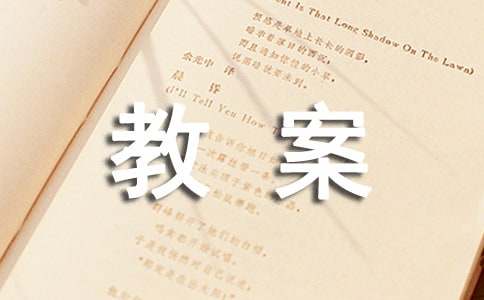- 相关推荐
Module1 Europe单元教案
作为一位不辞辛劳的人民教师,时常要开展教案准备工作,教案是实施教学的主要依据,有着至关重要的作用。那么教案应该怎么写才合适呢?下面是小编为大家收集的Module1 Europe单元教案,欢迎大家分享。

Module1 Europe单元教案 1
教学步骤
Period 1 Introduction, Function
Teaching Goals:
1.To arouse Ss’ interest in learning about Europe.
2.To get Ss to learn words and phrases to describe location.
Teaching Procedures:
Step 1.Introduction
1.Ask Ss to finish the following activities in pairs.
(1) let Ss give as many European countries as they can and write the names of the countries on the blackboard.
(2) Let Ss give as many European cities as they can and write the names of the cities on the blackboard too.
(3) Match the countries with the cities.
For your reference:
Germany : Frankfurt, Essen, Bremen, Munich
France: Paris, Monaco, Lyon, Strasbourg
Italy: Rome, Naples
Britain: Glasgow, Manchester, Birmingham, London, Belfast
Poland: Warsaw, Wroclaw
2.Ask Ss to complete the table in Activity 1, make sure all Ss read the words in the box correctly.
3.Ask Ss to read the information on in Activity 2 and find out the countries on the map.
Step 2.Function
1.Ask Ss to describe the location of their home.
2.Ask Ss to describe the location of Shandong Province, using the phrases “in the east of” , “on the north of”, and “to the west of”.
For your reference:
Shandong Province is in the east of China, on the north of Jiangsu Province and to the west of Japan.
Step 3.Homework
1.Ask Ss to describe the location of the city or town they live in.
2.Ask Ss to Preview Reading and Vocabulary.
Period 2 Reading and Vocabulary
Teaching Goals:
1.To let Ss know some of the European cities.
2.To get Ss to know the famous architectures in the European cities.
3.To get Ss to learn some useful language points.
Teaching Procedures:
Step 1.Revision
Show the whole map of Europe, let Ss point out these countries’ position such as France, Spain, Italy, Greece…
Step 2.Leading-in
1.Let Ss discuss the landmarks of each city, which they point out in the previous step and call back the answers.
2.Let Ss match up the photos with the descriptions in Activity 1 on page 2.
Step 3.Reading
1.Fast reading
Ask Ss to read the passage quickly and answer the question:
Which countries do the four cities mentioned in the passage belong to?
Suggested Answer:
Paris belongs to France.
Barcelona belongs to Spain.
Florence belongs to Italy.
Athens belongs to Greece.
2.Intensive reading
(1) Ask Ss to read the passage carefully and finish Activity 2 on page 3.
(2) Read the passage carefully and finish Activity 4.
3.Post-reading
Ask Ss to answer questions in Activity 3.
Step 4.Language Points
Ask Ss to discuss the important and difficult language points in groups.
1.Paris is the capital and the largest city of France situated on the River Seine.
巴黎是法国的首都,也是法国最大的城市,坐落在塞纳河畔。
One of the world’s largest art galleries, the Louvre is also located in Paris.
世界上最大的画廊之一“卢浮宫”也坐落在巴黎。
两句话中表达“位于……”,“坐落于……”分别用以下两个词组:
(1) be situated in /on/ from…
如:My bedroom was situated on the top floor of the house.
(2) be located in /on/ from…
如:The offices are located just a few minutes from the main station.
2.The city is also famous for it’s restaurant café’s and theatres.
这座城市同样因为它的餐馆,咖啡馆和剧院而闻名。
be famous for/as = be known for/as因为……而闻名,作为……而闻名。如:
Lu Xun is famous for his works / as a great writer.
3.Barcelona is the second largest city of Spain…
巴塞罗那是西班牙第二大城市。
the second largest city 第二大城市
“第几大(小、长、短)”等的表达为:the +序数词+形容词最高级。如:
He is the second tallest student in our class.
4.Gaudi worked on the project from 1882 until his death in 1926.高迪从1882年起从事这项工程直至1926年去世。
work on 不断工作,从事某工作。如:
He is working on a new novel.
※【拓展】
其他关于 work 的短语:
work hard at 努力学习/工作
work out 算出,制定出
work to sth 根据……行事
work towards sth努力达到,没法达成
work up to do 逐步发展到/逐步达到
5.During the Renaissance, some of the greatest painters of all time lived and work in Florence.在文艺复兴时期,历史上一些最伟大的'画家在佛罗伦萨生活和工作。
of all time 有史以来
关于 time 的短语还有:
at any time 在任何时候
at no time 决不,在任何时候都不
between times 有时间或
gain/ lose time 钟表上时间快慢
6.Their work has influenced other writers ever since.他们的作品影响了后世的作家。
(1) influence vt 对……有影响。如:
My teacher influenced my decision to study science.
※【拓展】
to have influence on / upon sth / sb对某人或某事产生影响。如:
His words had a strong influence on his daughter.
(2) ever since (…) 从那时起;从……以后。如:
① I was bitten by a dog once and I’ve been afraid of them ever since.
② He’s had a car ever since he was 18.
Step 5.Homework
1.Ask Ss to finish Reading exercise in the workbook on P69~70.
2.Ask Ss to write a summary for the text.
Period 3 Cultural Corner, Task, Writing
Teaching Goals:
1.To get Ss to learn more about the European countries.
2.To get Ss to know something about the European Union.
3.To get Ss to write a passage about a region of China.
Module1 Europe单元教案 2
一、教学目标
1.语言知识目标
学生能掌握本单元重点词汇,如 across,continental,face,range 等,及短语 in terms of,ever since,on the other side of 等,准确理解并运用。
熟悉不同国家与城市的英文表达,如 France,Spain,Paris,Barcelona 等,知晓其地理位置特点。
2.语言技能目标
能读懂有关欧洲地理、文化的说明文,快速抓取关键信息,提升阅读速度与理解能力,完成细节、主旨类题目。
学会用英语介绍欧洲著名景点,描述地理位置与特色,口语表达流畅自然。
3.情感态度目标
激发学生对欧洲文化的探索兴趣,拓宽国际视野,培养跨文化交际意识,理解文化多样性。
二、教学重难点
1.教学重点
本单元核心词汇、短语的`用法,通过例句、情境让学生熟练掌握。
欧洲地理与文化知识梳理,明晰重要城市、河流、山脉分布及特色。
2.教学难点
地理方位的英文准确表述,指导学生用复杂句式描述地点间相对位置。
让学生体会文化背后蕴含的价值观,理解文化差异根源。
三、教学方法
讲授法、小组讨论法、情境教学法
四、教学过程
1.Lead-in(5 分钟)
播放欧洲风景短片,涵盖埃菲尔铁塔、大本钟、阿尔卑斯山等标志性景观,提问学生片中地点,引出单元主题“Europe”。
2.Vocabulary Learning(15 分钟)
展示词汇表,领读单词、短语,解释词义,举例说明用法,如“The Alps range over four countries.”。
开展词汇小游戏“单词接龙”,巩固记忆。
3.Reading(25 分钟)
分发关于欧洲的说明文阅读材料,限时阅读,布置任务:找段落主旨、圈关键地理名词、回答细节问题。
小组讨论答案,教师点评,讲解长难句,梳理文章结构。
4.Cultural Introduction(15 分钟)
结合 PPT,介绍法国时尚文化、西班牙斗牛文化、意大利歌剧文化等,展示图片、视频,让学生分享感受。
5.Summary & Homework(10 分钟)
总结重点词汇、地理知识与文化要点;布置作业:用所学词汇写篇介绍家乡地理位置的短文,收集欧洲某国小众文化资料。
Module1 Europe单元教案 3
一、教学目标
1.语言知识目标
复习巩固本单元词汇、短语,拓展相关近义词、反义词,丰富词汇储备。
掌握描述地理特征、文化现象的功能性语句与语法结构。
2.语言技能目标
大幅提高学生听力水平,听懂有关欧洲旅游、地理科普的英语材料,精准抓取信息,完成填空、选择。
提升写作能力,能按要求写出逻辑清晰、内容详实的欧洲景点介绍文章,语言优美。
3.情感态度目标
培养学生自主学习、合作探究精神,鼓励积极参与课堂活动,增强英语学习自信。
二、教学重难点
1.教学重点
听力技巧训练,如预测听力内容、抓关键词、速记要点,通过真题演练掌握。
写作框架搭建与素材积累,指导学生谋篇布局,合理运用素材。
2.教学难点
让学生灵活切换不同听力场景思维,快速适应语速、口音变化。
消除学生写作中式英语痕迹,提升语言地道性、准确性。
三、教学方法
任务驱动法、听写法、合作学习法
四、教学过程
1.Revision(10 分钟)
以听写、填空形式复习词汇,回顾欧洲地理知识;学生互批互改,教师答疑。
2.Listening Skills Training(20 分钟)
播放一段欧洲旅游介绍音频,让学生预测内容,写下关键词。
初听完成基础信息填空;再听,回答深层理解问题;复听,核对答案,讲解听力技巧。
更换不同口音、语速的'听力素材,强化训练。
3.Writing Practice(25 分钟)
给出写作任务:介绍欧洲一处著名景点,分析游客喜欢原因,提出游览建议。
学生分组讨论,列出提纲,教师巡视指导;小组推选代表展示提纲,其余组提建议。
学生独立写作,教师提醒注意语法、词汇运用;完成后同桌互评,修改完善。
4.Presentation & Feedback(15 分钟)
选取部分学生作品展示,全班共同点评,表扬优点,指出不足;教师总结写作共性问题。
5.Homework(10 分钟)
要求学生根据课堂反馈,重写作文,上传至学习平台;推荐观看欧洲旅游纪录片,记录好词好句。
Module1 Europe单元教案 4
一、教学目标
1.语言知识目标
学生能自如运用本单元重点词汇、短语描述欧洲艺术、建筑、民俗。
掌握定语从句、现在分词作状语等语法,用于文化现象描述。
2.语言技能目标
增强口语表达流利度与交际性,能就欧洲文化话题深入交谈,发表见解。
培养学生跨文化理解能力,学会从文化视角解读欧洲社会现象。
3.情感态度目标
让学生充分领略欧洲文化魅力,尊重多元文化,激发文化创作灵感,提升人文素养。
二、教学重难点
1.教学重点
欧洲典型文化元素讲解,如哥特式建筑特点、文艺复兴艺术风格。
创设真实情境,让学生沉浸式体验欧洲文化,锻炼口语。
2.教学难点
引导学生理解文化深层内涵,避免表面、片面认知。
帮助学生将文化感悟融入语言表达,实现文化与语言有机结合。
三、教学方法
情境教学法、角色扮演法、探究式教学法
四、教学过程
1.Cultural Lead-in(10 分钟)
展示欧洲不同时期艺术作品,如达芬奇《蒙娜丽莎》、米开朗基罗《大卫》,提问学生风格特点,导入文化主题。
2.Cultural Exploration(25 分钟)
分小组探究欧洲建筑、音乐、民俗文化,每组聚焦一领域,上网搜集资料,制作 PPT。
小组轮流展示成果,介绍哥特式大教堂结构、维也纳古典音乐流派、德国啤酒节习俗等;教师补充、点评。
3.Role-play Activity(20 分钟)
设定情境:外国游客来欧洲旅游,学生分别扮演导游与游客,围绕景点游览、文化体验对话。
教师观察,适时介入指导,纠正发音、语法错误,鼓励生动表达。
4.Cultural Reflection(15 分钟)
组织学生讨论欧洲文化对现代生活的影响,如时尚潮流、生活理念;引导思考文化传承与创新。
5.Summary & Homework(10 分钟)
总结文化知识与语言要点;布置作业:设计欧洲文化主题手抄报,或模仿欧洲风格创作小作品。
【Module1 Europe单元教案】相关文章:
Module1的教案04-25
Ecological networks and greenways in Europe: reasoning and concepts05-02
Degradation of High Mountain Ecosystems in Northern Europe05-02
单元练习教案04-04
三单元教案04-25
高一英语外研版 必修3 Module 1 Europe Period 2 Reading and Vocabulary 教案04-25
第四单元教案04-25
第三单元的教案04-24
第四单元 教案04-24